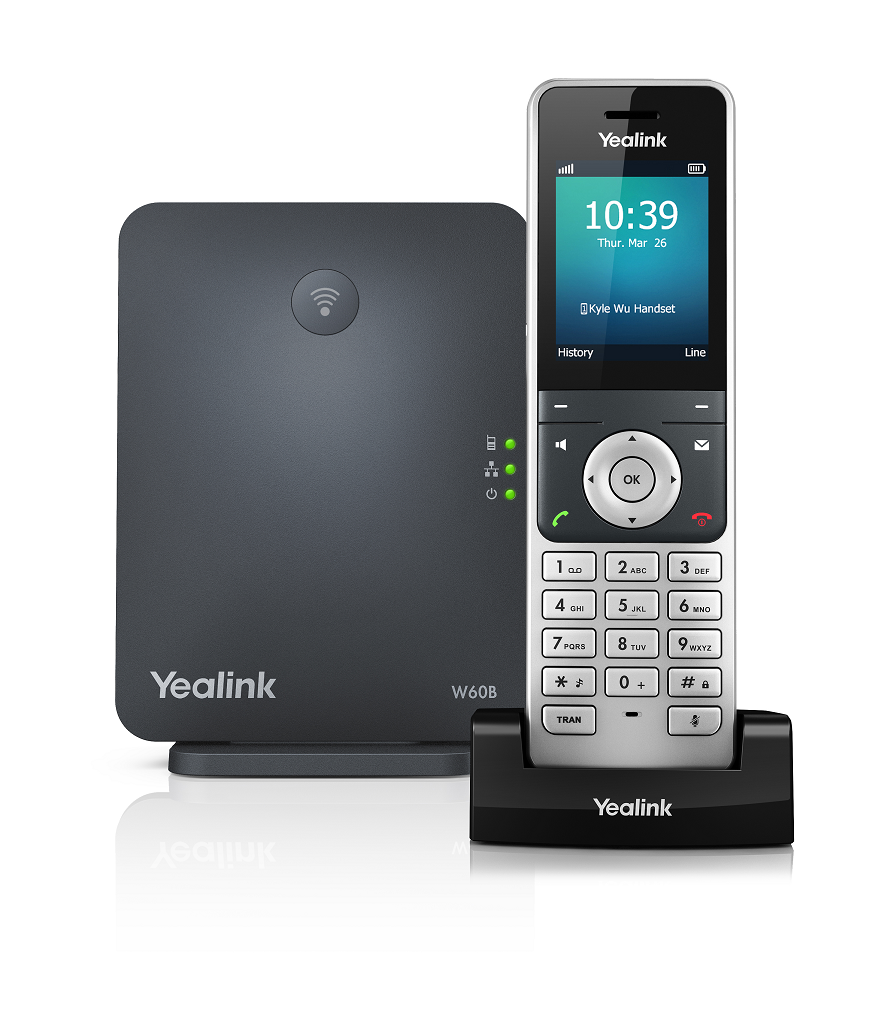Almost 90% of businesses in the United States have fewer than 20 employees, according to the United States Census Bureau. To get VoIP service, companies of this size typically use a hosted VoIP service rather than having an on-premise IP PBX. With Epygi Technologies, however, the on-premise solution becomes cost-effective, even for a micro-business with a single employee. How does Epygi do it? We had a chance to ask Mario Cuello, CEO of Epygi Technologies, about what makes them unique in their ability to deliver robust, feature-rich systems at such accessible prices.
TeleDynamics Think Tank
On-premise VoIP is now affordable for micro- and SMBs thanks to Epygi
Topics: IP PBX, Business Telephone System, VoIP, Product Review
AstriCon, the longest-running event devoted to the Asterisk open-source communications framework, celebrated its 14th year in Orlando last week. Todd Baca and Mark Parker were there at the TeleDynamics booth speaking with Asterisk experts and telephone systems professionals.
According to the Asterisk website, more than a million communications systems in over 170 countries are based on Asterisk, and “almost the entire Fortune 1000 list of customers” use Asterisk. So, if you are in the telecommunications business, you need to know about Asterisk!
Topics: Customer Service, IP PBX, Business Telephone System, SIP, Events
Free up your employees with Yealink’s new W60B DECT IP phone system
Product Review
Companies are continually striving to discover new workplace philosophies that will maximize the productivity of their employees. Google, Apple, and Facebook are just some examples of organizations that are introducing innovative workspace and workplace designs. Most of these are moving away from the traditional “employee tied to a desk” standard by freeing up their staff and providing for mobility within the workspace.
Yealink’s W60B DECT IP Phone Base Station is an ideal ally to aid any small- to medium-sized business in achieving such employee mobility. Since it is easy to deploy, flexible in its functionality, and rich in features, it provides for all the requirements of any internally mobile workforce.
Topics: SIP Phones, Business Telephone System, VoIP, Yealink, Cordless, DECT
Even in this digital age, your business can’t afford to ignore voicemail
There’s a lot of talk out there about the obsolescence of voicemail. But companies that don’t give importance to voicemail do so to the detriment of their customers' experience.
CRM.com reported that small- and mid-sized businesses experience up to 75% voicemail abandonment, referring to the people that call the company but hang up without leaving a message when transferred to voicemail.
This startling statistic is in part fueled by a lack of responsiveness on the part of the voicemail recipient. According to Nuance, 27% of those surveyed reported that when they get a voicemail, they feel burdened by the process of retrieving and listening to it, and 19% said they actually get annoyed when they receive a voicemail!
Luckily, it’s possible to have the best of both worlds and reap the benefits of voicemail while removing the hassle for company associates.
Topics: IP PBX, Business Telephone System, Mobility (including remote work), Productivity, Voicemail
You asked, we answered: Grandstream’s GDS3710 facility access solution
Answers to the most frequently asked questions about our HD, IP door phone
By Kate Clavet, Content Marketing Specialist, Grandstream Networks
Grandstream Networks recently came out with our first facility access solution, the GDS3710 an HD, IP door phone. It’s been a huge hit within the industry and we really enjoy using it in our offices, but as with any new product there are a lot of questions. I took this time as an opportunity to answer the most common questions, in one handy spot. Enjoy!
Topics: Business Telephone System, Grandstream, Peripherals, Firmware Upgrades, Home Security
Complement your telecommunications experience with Skype
In today’s connected world, it is increasingly common to have workers in different parts of the country, or even different parts of the world, collaborating over the multiple communications channels available to them. Many remote workers use OTT services like Skype to keep in touch with their clients, partners and customers in situations where a telephone call (even over VoIP) would incur a non-trivial cost.
Such calls usually require the use of a computer with a webcam and either a headset or speakers and a microphone. This makes Skype calling more complex than a simple telephone call. Skype-enabled telephony devices remove this complexity by integrating the application with the endpoint, so communicating over Skype becomes as simple as a traditional telephone call. By enabling Skype, these devices also make more features available to the user like instant messaging, presence technology, and file sharing.
In this article we list some productivity-boosting Skype- and Skype for Business-enabled products.
Topics: OTT VOIP, Business Telephone System, Software Integration, Conferencing, Android, Microsoft
VoLTE and OTT voice applications – what’s the difference?
When to use VoLTE vs. an OTT voice app
In a previous article, we discussed voice over LTE (VoLTE) and its implications for the enterprise VoIP phone system. All voice traffic over the LTE (also known as 4G mobile) network is packetized and conforms to modern VoIP standards, making it the first mobile telephony standard to completely circumvent the traditional circuit-switched telephony infrastructure.
In many ways, VoLTE sounds a lot like over-the-top (OTT) voice applications that leverage the same protocols for voice. In this article, we look at what OTT voice apps are, what VoLTE is in relation to OTT, and the benefits of using one, the other or both over an LTE network.
Topics: OTT VOIP, Business Telephone System, VoIP, Software Integration, Trends, Mobility (including remote work), Mobile
Grandstream’s GXP1700 IP phones are both functional and cost-effective
The family of endpoints includes the GXP1760, GXP1780 and GXP1782 models
Telecommunications infrastructure can be one of the biggest costs for a small- to medium-sized company, so it’s critical to find a solution that strikes the right balance between value and cost, while at the same time ensuring scalability so the system can grow along with the business.
IP phones often comprise the bulk of the cost of a business telephone system, so choosing the right endpoints is an important part of the functionality-cost ratio. Developed specifically with growing businesses in mind, Grandstream’s mid-range GXP17xx series IP phones achieve this balance remarkably well.
Topics: SIP Phones, Business Telephone System, Grandstream, Product Review
What VoLTE means for the enterprise VoIP system
As investments in the legacy circuit-switched voice network wane, national telephone operators are directing their energies to mobile and IP networks. This focus has brought about many “Voice over X” or VoX technologies over the past few years. While VoIP (voice over IP) is one of the most important ones, many related technologies are also proliferating such as VoWiFi, VoDSL, and VoZigbee. The VoX technology we examine in this article is voice over Long-Term Evolution or VoLTE, which has exciting implications for enterprise VoIP telephone systems.
Topics: Business Telephone System, VoIP, SIP, Trends, Mobile
Exclusive Interview: What to expect from VTech and Snom post-merger
We had a chance to speak with Tommy Lee, VP of sales at VTech. Before VTech Holdings Limited acquired 100% of the share capital of Snom Technology, GmbH in a transaction that was completed in November of last year, Tommy was president of Snom, Inc., an American subsidiary of Snom Technology, GmbH.
In this exclusive interview, Tommy speaks candidly about what customers can expect from the two brands post-acquisition.
Topics: SIP Phones, Business Telephone System, VoIP, Trends, VTech, Snom
Welcome to our Think Tank
In this blog you'll read our thoughts on business telephone systems. While a lot has changed in telecom since TeleDynamics was founded in 1981, we remain as committed as ever to delivering the best customer service in the industry.
If you would like elaboration on a specific topic, please let us know in the comments section.
Happy reading and thanks for stopping by!
Receive New Articles by Email

Recent Posts
- Voice vs. video: why VoIP calls still hold their ground
- Inside Yeastar Day 2025: big updates, bold AI features, and what’s next
- Wi-Fi 7: the new standard for speed, capacity, and reliability
- Smarter collaboration: how AI is transforming UC
- Big sound, small size: Yealink's ultra-portable SP9x speakerphones
Posts by Topic
- 5G
- AI
- Android
- Avaya
- Bluetooth
- Boom Collaboration
- Business Continuity
- Business Strategy
- Business Telephone System
- Case Study
- Catalog
- Cisco
- Cloud
- Collaboration
- Communication
- Conferencing
- Cordless
- CPaaS
- Customer Service
- Customer Success Story
- CyberData
- DECT
- E911
- Events
- Facility Management
- Firewall
- Firmware Upgrades
- FoIP
- Gateway
- Grandstream
- Headsets
- Home Security
- IoT
- IP PBX
- Jabra
- Konftel
- Leasing
- Microsoft
- Mobile
- Mobility (including remote work)
- NEC
- Network Design
- Network Infrastructure
- Network Security
- News
- OTT VOIP
- Outsourcing
- Panasonic
- Peripherals
- PoE
- Polycom
- Power Management
- Product Review
- Productivity
- Protocols & codecs
- QoS
- Regulations
- Routers
- SD-WAN
- SIP
- SIP Phones
- Snom
- Software Integration
- Surveillance
- Switches
- Total Voice Solution
- TP-Link
- Trends
- Troubleshooting
- UCaaS
- Unified Communications
- Videoconferencing
- VLAN
- Voicemail
- VoIP
- VoWi-Fi
- VTech
- WAN Technology
- Wi-Fi
- Wireless
- WISP
- Yealink
- Yeastar
- Zoom














